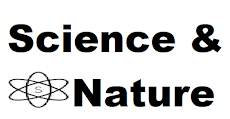For over three decades, the Hubble Space Telescope has been humanity's window into the cosmos, capturing breathtaking images and unlocking secrets of the universe. Launched in 1990, Hubble continues to deliver extraordinary discoveries that deepen our understanding of the vast expanse beyond Earth. From distant galaxies to mysterious dark energy, here are some of the most amazing things Hubble has uncovered.
1. The Hubble Deep Field
The Hubble Deep Field image is perhaps one of the most iconic achievements by Hubble. In 1995, astronomers pointed the telescope at a seemingly empty patch of sky and captured light from nearly 3,000 galaxies, some over 12 billion light-years away. This image revealed the universe's incredible scale and the sheer number of galaxies, revolutionizing our understanding of the cosmos.
2. The Birth and Death of Stars
Hubble's high-resolution images of star-forming regions, like the Pillars of Creation in the Eagle Nebula, have become iconic. These towering columns of gas and dust are nurseries where new stars are born. On the other hand, Hubble has also captured the dramatic deaths of stars, such as supernova explosions and planetary nebulae, thus depicting the life cycle of stars.
3. Exoplanet Atmospheres
Although it wasn't built for this, Hubble has become a great tool for studying exoplanet atmospheres. By analyzing the light passing through a planet's atmosphere as it transits its star, Hubble has detected water vapor, carbon dioxide, and other molecules, opening up the hunt for potentially habitable worlds.
4. The Expanding Universe and Dark Energy
Hubble provided key observations that allow the expansion rate of the universe to be measured; this rate is known as the Hubble Constant. Its observations were responsible for the discovery of dark energy, which pushes the acceleration of the expansion of the universe forward. This discovery is among the most important in modern cosmology: it fundamentally changed the understanding of the universe's fate.
5. Gravitational Lenses
Hubble has taken extraordinary pictures of gravitational lensing. That is the bending of light around huge masses, like galaxy clusters. These "cosmic magnifying glasses" provide fantastic views, but also make it possible to look at galaxies that are otherwise too far away or too dim to be seen.
6. Black Holes and Active Galaxies
Hubble has established convincing evidence for
supermassive black holes in the center of galaxies. It has confirmed the
presence of these by watching the movement of stars and gas in the
neighborhood. Hubble has photographed material jets shooting out from active
galactic nuclei, which gives an idea of extreme environments surrounding black
holes.
7. The Age of the Universe
Before Hubble, estimates for the age of the universe varied wildly. By analyzing Cepheid variable stars and distant supernovae, Hubble narrowed this estimate to something like 13.8 billion years-a crucial landmark in reconstructing cosmic chronology.
8. Collision of Galaxies
The Hubble images of galactic collisions, such as the Antennae Galaxies, are beautiful and scientifically valuable. These interactions show how galaxies evolve over time, merging to form larger structures. These events are crucial for understanding the dynamic processes that shape the universe.
9. Stunning Nebulae
Hubble has photographed numerous nebulae, for instance, such as Horsehead Nebula and the Helix Nebula; while they may look dramatic and beautiful, they offer important information concerning the structure and behavior of interstellar matter. In the case of these photos, what are revealed is the complicated gas and dust in our own galaxy.
10. Distant Galaxies
Hubble's advanced instruments, combined with gravitational lensing, have allowed astronomers to observe galaxies formed just a few hundred million years after the Big Bang. These ancient galaxies offer a glimpse into the universe's early stages, helping scientists piece together the story of cosmic evolution.
A Legacy That Will Last Forever
Hubble has inspired awe and wonder that proves space exploration is as much about our desire to understand our place in the universe as it is about technology. With Hubble continuing its mission alongside James Webb Space Telescope, it is assured of a long legacy. The insights and images it has provided remain cornerstones of astronomy for generations to come.
Reminiscent of the fantastic scope of human
imagination, a Hubble Space Telescope looks into the universe for new mysteries
to unravel. Certainly, its journey has merely just begun, and possibly the
discoveries yet to come may be just as startling as those it has found.



.png)
%20(1)%20(2).jpg)
0 Comments